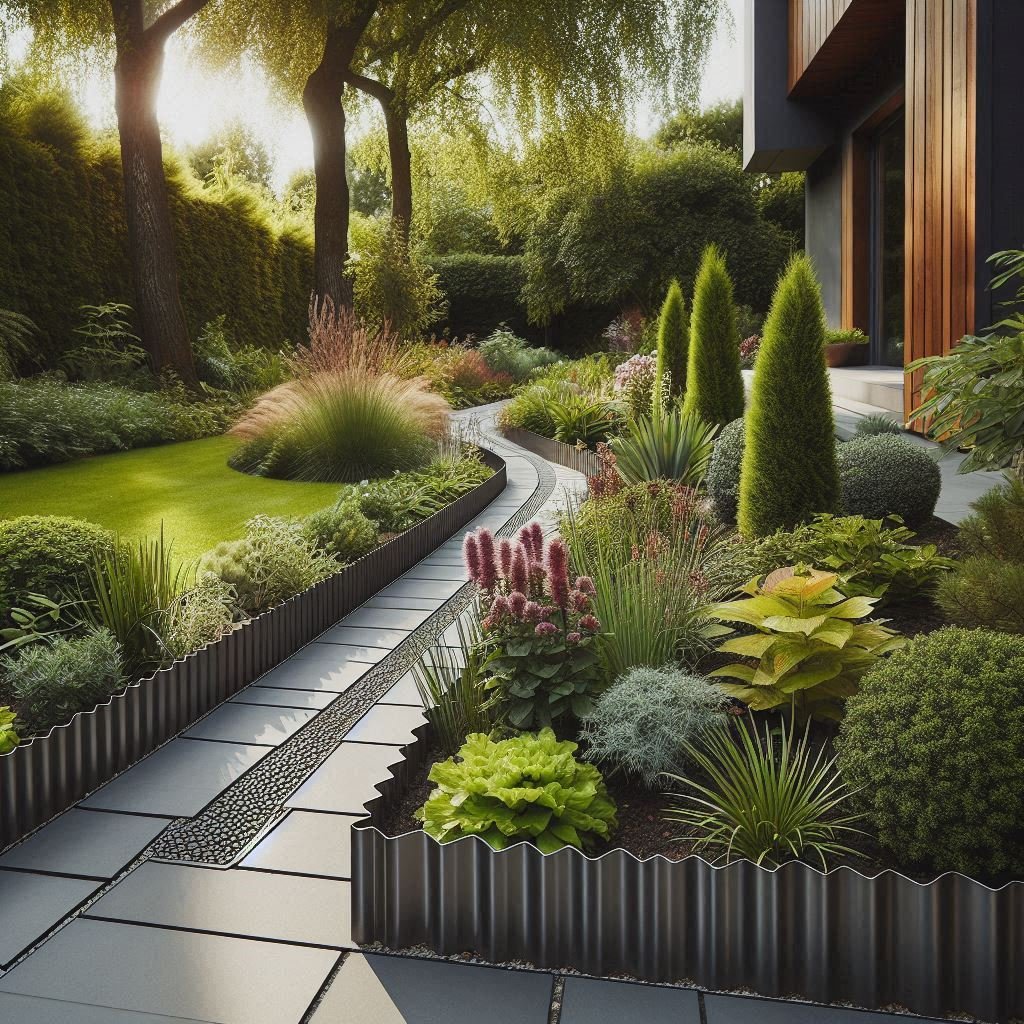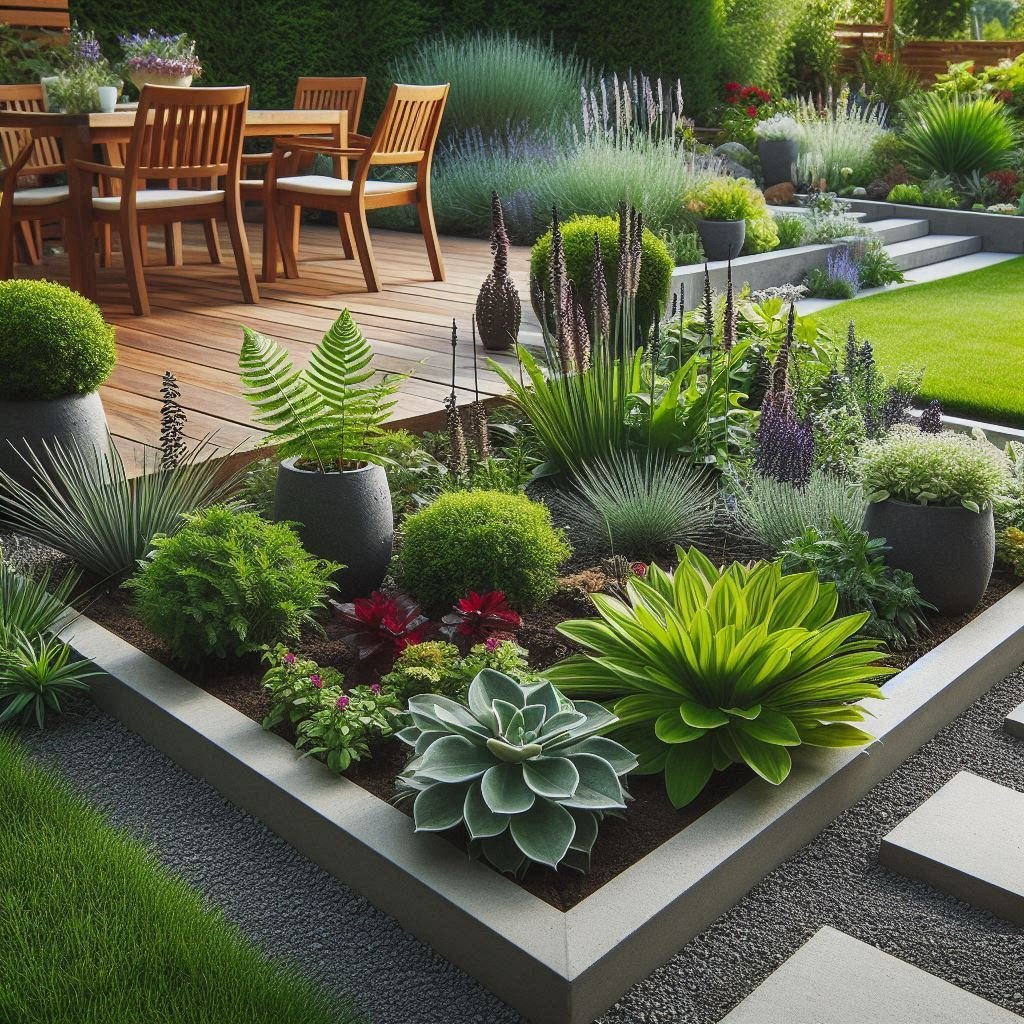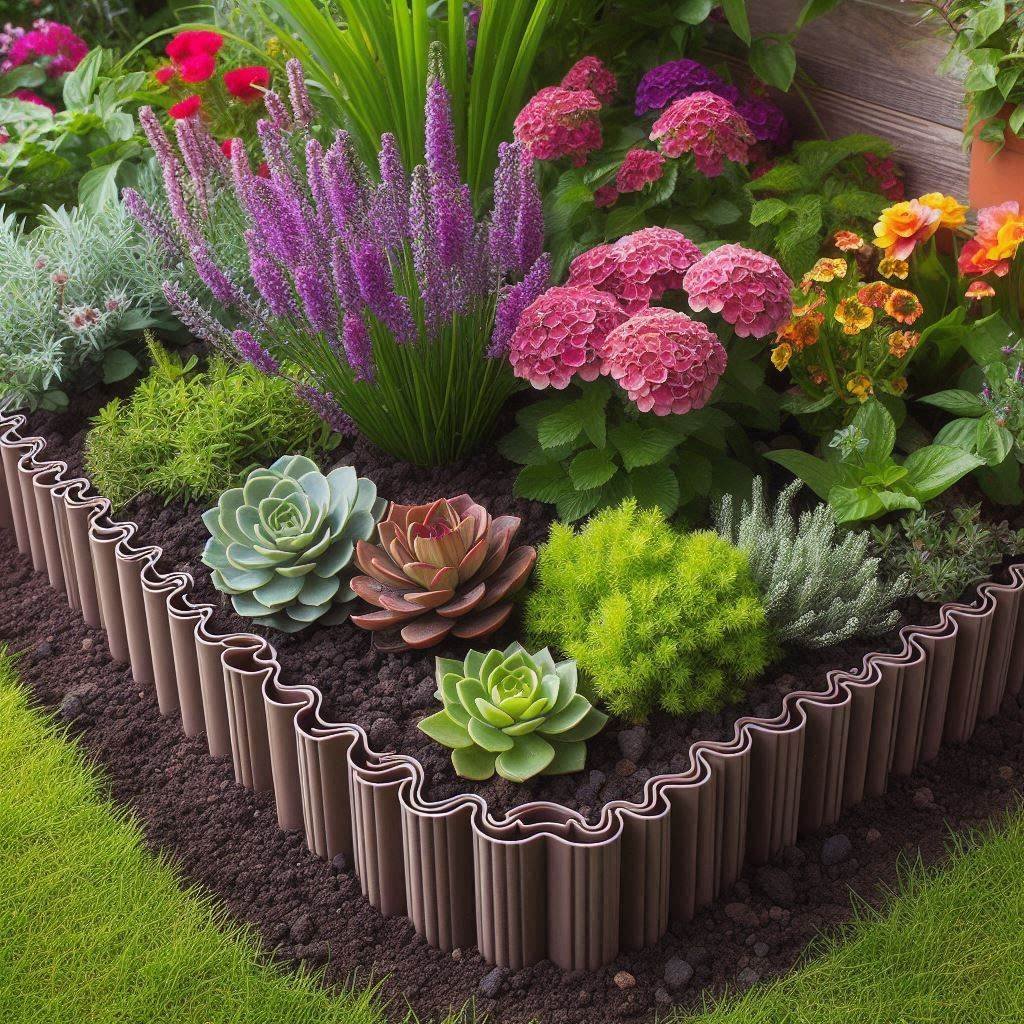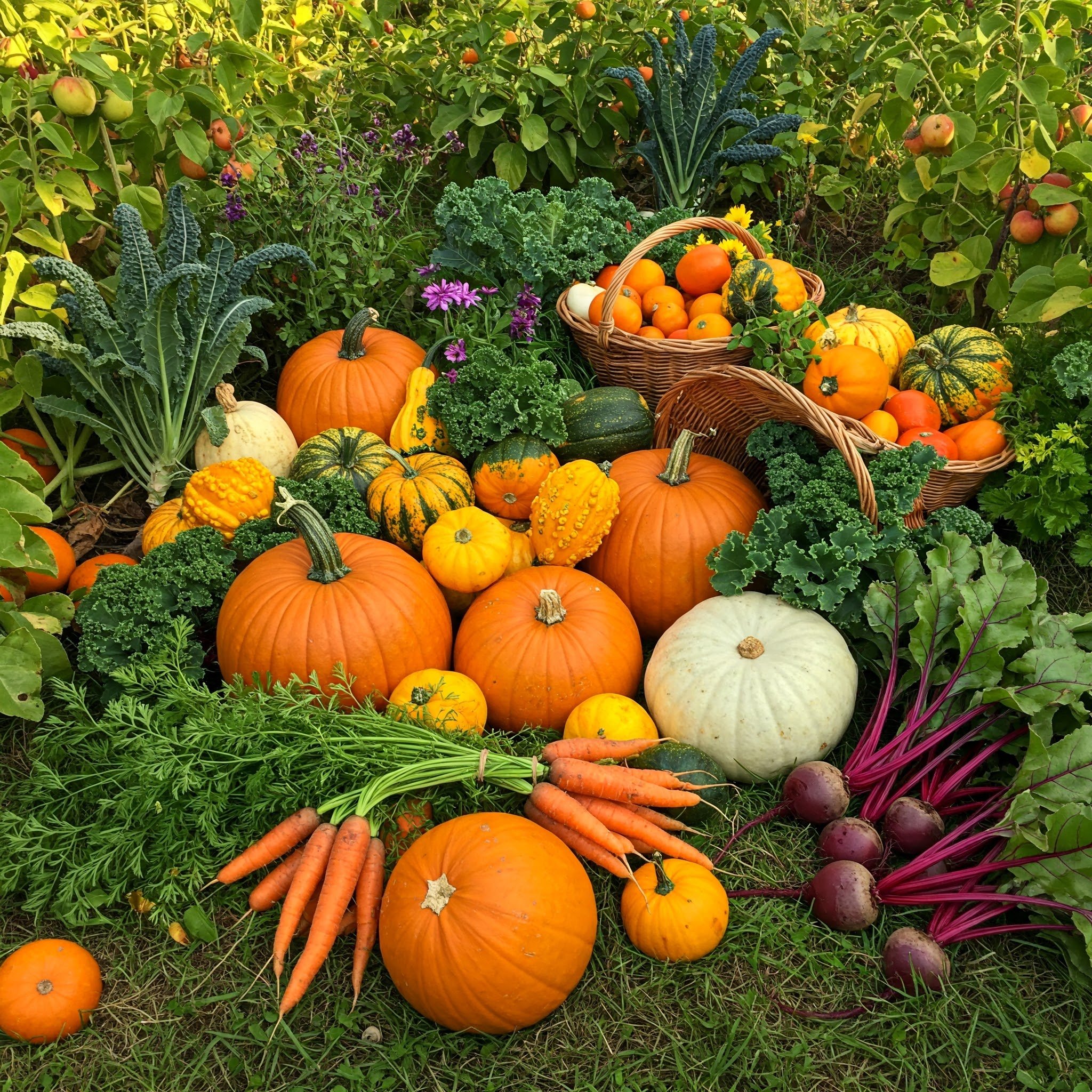15 Garden Edging Ideas to Transform Your Space
Looking to elevate your garden’s look? Discover 15 innovative garden edging ideas that will redefine your outdoor space and create a stunning border that’s both functional and stylish.
Gardening is all about the little details that come together to create a beautiful, harmonious outdoor environment. One of the best ways to add personality and structure to your garden is by incorporating garden edging. Whether you’re aiming for a classic, rustic vibe or a modern, minimalist design, the right edging can elevate your space dramatically. But with so many options out there, how do you choose? Fear not! In this article, we’ll take you through 15 stunning garden edging ideas that can transform your outdoor space and make it a perfect haven for relaxation, creativity, or entertainment. Let’s dive into the world of garden borders and discover which one fits your style!
1. Classic Brick Edging for Timeless Appeal
Classic brick edging is a popular and timeless choice for garden borders, perfect for creating a formal garden atmosphere. Its sturdy design offers durability and can last for many years, providing a neat, well-defined edge for your garden beds. Brick’s solid structure makes it a reliable option, but the installation process can be time-consuming and may require some maintenance over time. To install brick edging, begin by laying down a layer of sand as a base to ensure proper drainage. Then, arrange the bricks in a pattern that fits your garden’s style. For added stability and to prevent shifting, secure the bricks with mortar. This method results in a beautiful, long-lasting garden border that enhances the overall look of your outdoor space.
2. Stone and Gravel Edging for Rustic Charm
Stone and gravel edging provide a natural, rustic touch that enhances the beauty of your garden, especially for wildflower or natural landscaping. Stone is highly durable, creating a sturdy boundary, while gravel offers excellent drainage, preventing water from accumulating. Together, they form both a visually appealing and functional border, ideal for creating a relaxed and earthy vibe. When laying stone edging, you can opt for a clean, structured look by aligning the stones tightly, giving your garden a neat, defined border. For a more informal, organic feel, leave small gaps between the stones, allowing the gravel to spill through, blending seamlessly with the landscape. This combination of stone and gravel not only improves the aesthetics of your garden but also enhances its practicality.
3. Metal Garden Edging for Sleek, Modern Borders
If you’re aiming for a contemporary look, metal garden edging is an excellent choice. Its sleek, modern appearance adds sharp, clean lines to any garden design, making it perfect for minimalist or contemporary landscapes. Metal is incredibly durable, able to withstand the elements and retain its shape, whether you choose to create crisp, straight lines or elegant curves. It requires minimal maintenance compared to other materials, making it a practical option for long-lasting garden borders. However, to keep your metal edging looking fresh and free from rust, especially if you’re using steel, periodic painting is recommended. This simple step will ensure that your metal edging remains both stylish and functional for years to come, giving your garden a modern edge.
4. Wooden Edging for a Natural, Earthy Look
Wooden edging adds a charming, natural aesthetic to any garden, making it a perfect match for spaces that embrace organic and rustic elements. Cedar, redwood, and pressure-treated pine are all excellent choices for garden borders, with cedar being especially resistant to decay, making it ideal for outdoor use. Wooden edging brings warmth and texture, creating a welcoming atmosphere in any garden design. However, wood requires regular maintenance to keep it looking its best. Applying a protective sealant helps prevent weather damage, extends the lifespan of the wood, and maintains its vibrant appearance. Regular cleaning and reapplying the sealant every couple of years will ensure that your wooden edging remains sturdy and beautiful, continuing to enhance your garden’s natural charm.
5. Concrete Garden Edging for Clean Lines and Durability
Wooden edging adds a charming, natural aesthetic to any garden, making it a perfect match for spaces that embrace organic and rustic elements. Cedar, redwood, and pressure-treated pine are all excellent choices for garden borders, with cedar being especially resistant to decay, making it ideal for outdoor use. Wooden edging brings warmth and texture, creating a welcoming atmosphere in any garden design. However, wood requires regular maintenance to keep it looking its best. Applying a protective sealant helps prevent weather damage, extends the lifespan of the wood, and maintains its vibrant appearance. Regular cleaning and reapplying the sealant every couple of years will ensure that your wooden edging remains sturdy and beautiful, continuing to enhance your garden’s natural charm.
6. Plastic or Rubber Edging for Easy Installation
If you’re looking for an easy, no-fuss edging solution, plastic or rubber might be the perfect choice. These materials are lightweight, flexible, and incredibly easy to install, making them a great option for beginners. One of the key advantages of plastic or rubber edging is their ability to create smooth, curving borders with ease, allowing you to customize your garden layout without hassle. Additionally, they are cost-effective and highly durable, able to withstand weather changes and heavy use over time. The low-maintenance nature of plastic and rubber makes them even more appealing, as they don’t require frequent upkeep like wood or metal. With their weather-resistant properties, these materials provide a functional and affordable solution for garden borders that last.
7. Rope Edging for Coastal or Bohemian Vibes
Rope edging is an ideal choice for creating a relaxed, boho, or coastal vibe in your garden. The textured appearance of rope adds a unique, whimsical touch that enhances laid-back, casual garden designs. To use rope for edging, simply wind thick, weather-resistant rope along the edges of your garden beds, securing it with stakes to ensure it stays in place. This easy-to-install solution brings an effortless charm to any outdoor space. Rope edging works particularly well in coastal or beach-inspired gardens, where it complements the natural surroundings and reinforces a nautical theme. Whether you’re aiming for a boho retreat or a breezy beach look, rope edging provides a simple yet stylish way to define garden borders while adding character and texture to your landscape.
8. Flowering Border Edging for Colorful Curves
For a vibrant splash of color, flowering borders are an excellent choice. These beautiful, well-planted borders not only create a stunning visual effect but also attract pollinators like bees and butterflies, enhancing the health of your garden. To build a lasting flower border, choose perennial flowers such as lavender, coneflowers, and daylilies, which bloom year after year. To create a year-round flowering edging, plan your plantings carefully to ensure you have blooms at different times throughout the seasons. By selecting plants that flower in spring, summer, and fall, you’ll maintain a vibrant, ever-changing display of colors that keeps your garden looking fresh and lively no matter the time of year. Flowering borders are a simple yet effective way to add beauty and life to your outdoor space.
9. Glass Bottle Edging for a Fun, Eco-Friendly Option
For a quirky, eco-friendly garden edging idea, consider using glass bottles. This unique approach not only adds a colorful, whimsical touch to your garden but also provides a sustainable alternative to traditional materials. Glass bottles can be repurposed, making them an environmentally conscious option, while their reflective surfaces create a stunning visual effect by catching and bouncing light. To arrange glass bottles for maximum effect, place them in the ground with the opening facing up or down, ensuring they are tightly packed for a clean, defined edge. For added creativity, you can incorporate glass bottles into a raised bed design, giving your garden a distinctive, charming look. This fun and eco-friendly option is a great way to give your garden personality while promoting sustainability.
10. Paver Edging for a Low-Maintenance, Stylish Solution
Paver edging offers the perfect balance of practicality and style, making it an excellent choice for any garden. Available in a variety of sizes, colors, and shapes, pavers allow you to create a custom look that complements your garden’s design. Pavers are easy to install and highly versatile, making them ideal for both formal and informal garden styles. To install paver edging, simply lay a bed of sand to provide a stable base, arrange the pavers in your desired pattern, and then fill the gaps with gravel for added stability. This straightforward process results in a clean, durable border that not only defines your garden but also enhances its visual appeal. With paver edging, you can create a timeless, functional border that suits your unique garden aesthetic.
11. Recycled Materials Edging for Sustainability
Using recycled materials for garden edging is an excellent way to make your garden more eco-friendly while adding a unique touch to your outdoor space. Repurposing items like old tires, scrap wood, or metal parts helps keep waste out of landfills and gives these materials a second life. Old wooden pallets, bricks, and even metal pipes can be creatively used to build borders that not only look great but are also kind to the planet. Sustainable gardening practices like these help protect the environment by reducing waste and minimizing your carbon footprint. By incorporating recycled materials into your garden design, you can create a functional, attractive, and environmentally conscious outdoor space that reflects your commitment to sustainability.
12. Curved Lawn Edging for Smooth, Flowing Lines
Curved lawn edging is a fantastic way to soften the lines between different sections of your garden, creating fluid transitions between your lawn, garden beds, and other outdoor elements. Using specialized lawn edgers, you can easily create smooth, flowing curves along the perimeter of your garden, giving it a more natural and organic appearance. Curved edging improves the aesthetics of your garden by adding a sense of movement and inviting flow, making the space feel more welcoming and less rigid. Instead of sharp, angular lines, curved borders evoke a sense of harmony and balance, enhancing the overall beauty of your outdoor space. This simple change can completely transform the look of your garden, creating a more relaxed and visually appealing environment.
13. Vintage Metal Railings for a Classic Garden Feel
Vintage metal railings bring an old-world charm and timeless elegance to any garden, making them an ideal choice for spaces with a classic or formal design. The intricate patterns and craftsmanship of wrought iron railings create a statement, adding sophistication and character to your outdoor space. These railings can beautifully define garden boundaries or adorn entrances, infusing your garden with a sense of history and style. To keep vintage metal railings looking their best, regular maintenance is key. Be sure to remove any rust that develops and apply a protective coating to shield the metal from the elements. With proper care, vintage railings will continue to add elegance and charm to your garden for years to come, enhancing its beauty and appeal.
14. Cinder Block Edging for Affordable and Stylish Borders
Cinder blocks are an affordable and versatile material for garden edging, offering a modern, industrial aesthetic while staying within budget. These blocks are not only inexpensive but also easy to install, making them a great choice for DIY garden projects. Cinder blocks can be arranged in various ways, whether you prefer a formal, structured border or a more casual, laid-back design. To enhance the strength and stability of your edging, stack the cinder blocks in a staggered pattern, ensuring they’re securely positioned. For an extra touch of greenery, consider filling the hollow centers with soil and plants, which can add a burst of color and life to your garden borders. Cinder blocks provide a practical, stylish solution for garden edging with endless possibilities.
15. Gravel and Timber Edging for a Hybrid Look
For a unique hybrid style, combining gravel with timber creates a stylish and functional garden border that blends rustic charm with a refined look. Simply place timber logs along the edge of your garden, leaving spaces between them, and fill the gaps with gravel for a visually appealing contrast. The natural warmth of wood complements the rough texture of gravel, resulting in an effortlessly chic and low-maintenance edging solution. To enhance the beauty of your gravel and timber border, pair it with drought-tolerant plants like succulents and ornamental grasses, which thrive in minimal water and require little upkeep. This combination offers a sophisticated, year-round look, adding texture, color, and interest to your garden while keeping maintenance to a minimum.
Conclusion
No matter your garden style, there’s an edging idea that’s perfect for your space. Whether you choose the classic elegance of brick, the natural beauty of wood, or the eco-friendly charm of repurposed glass bottles, garden edging can truly elevate your outdoor area. The right edging not only defines your garden beds but also adds a unique touch that reflects your personal style. From the sleek, modern look of metal to the rustic appeal of stone and gravel, the possibilities are endless. By selecting an edging solution that resonates with your vision, you can transform your garden into a beautiful, organized space. So go ahead—pick an edging idea that speaks to you and start creating the garden of your dreams today!
Read next: 15 Low Maintenance Small Rock Garden Ideas to Try
Frequently Asked Questions
What is the best material for garden edging?
The best material depends on your garden style, budget, and maintenance preferences. Brick, stone, and metal are all popular options, each offering its own benefits.
How deep should garden edging be?
Garden edging should be at least 3-4 inches deep to ensure it stays in place and provides a clear boundary.
Can I use garden edging for raised beds?
Yes! Many types of garden edging, such as wood, stone, and metal, are perfect for creating raised garden beds.
How do I maintain my garden edging?
Regular cleaning, sealing, and occasional repairs can keep your garden edging looking fresh and intact.
Can garden edging help with weed control?
Yes! Properly installed edging can act as a barrier to prevent weeds from infiltrating your garden beds.













































